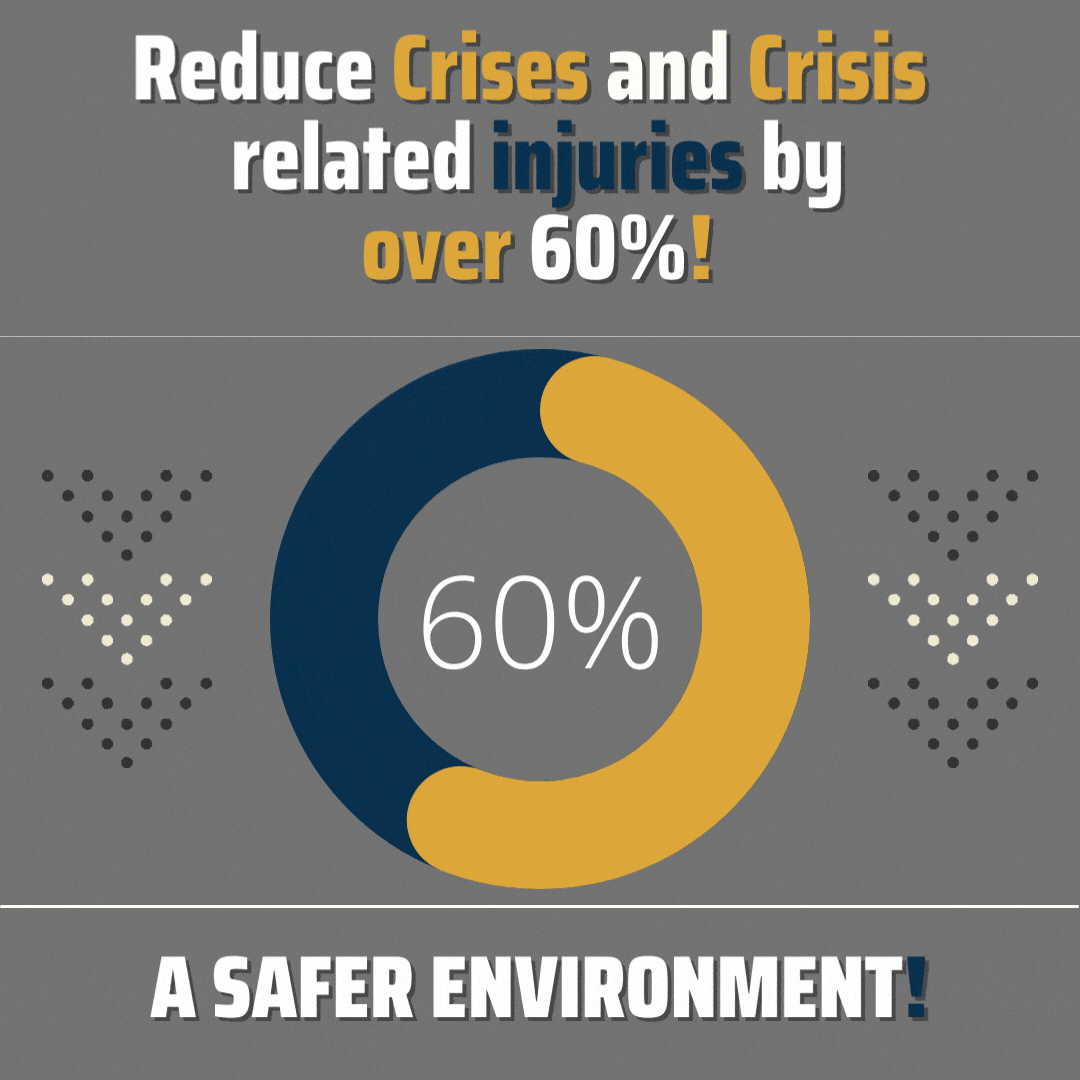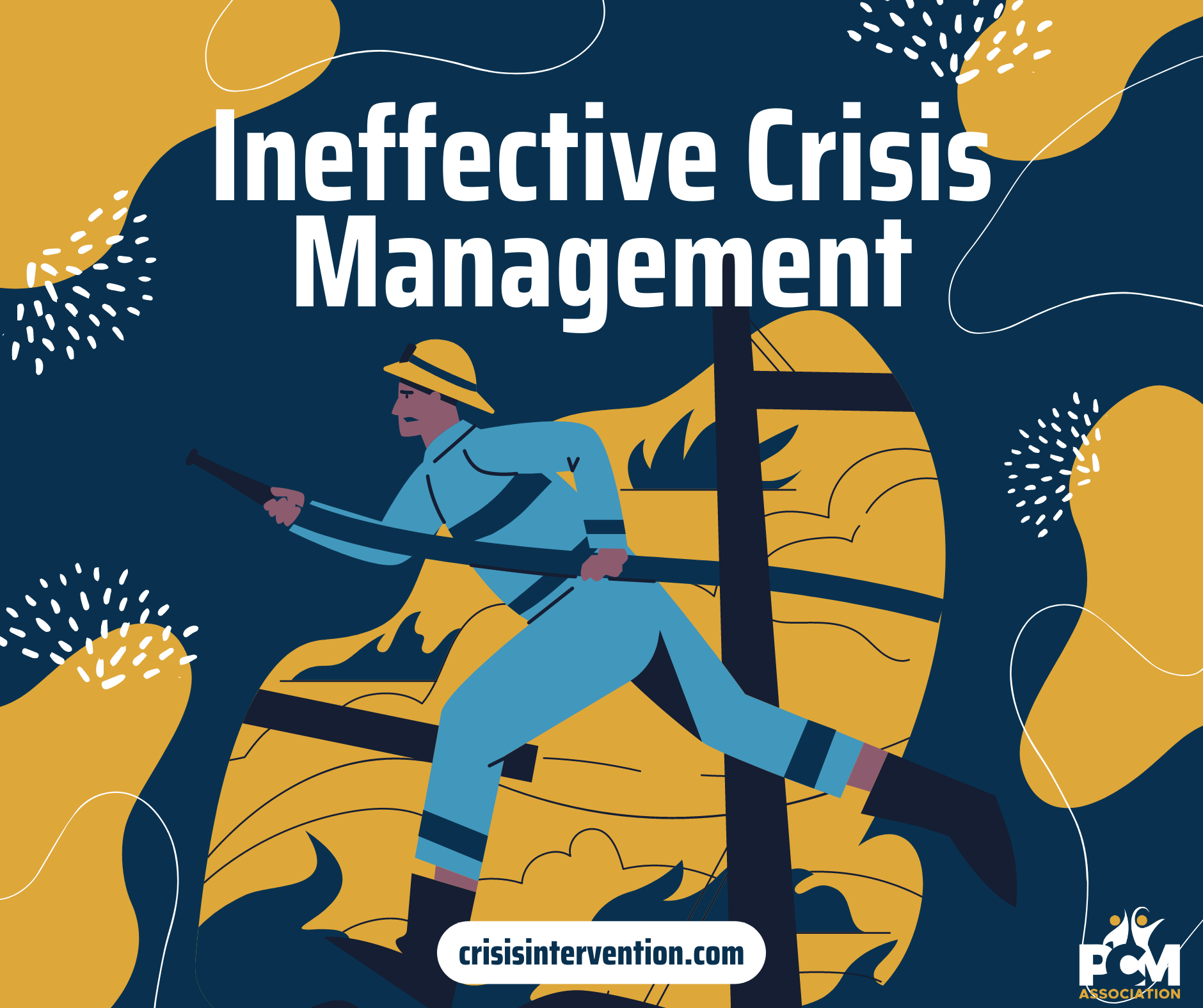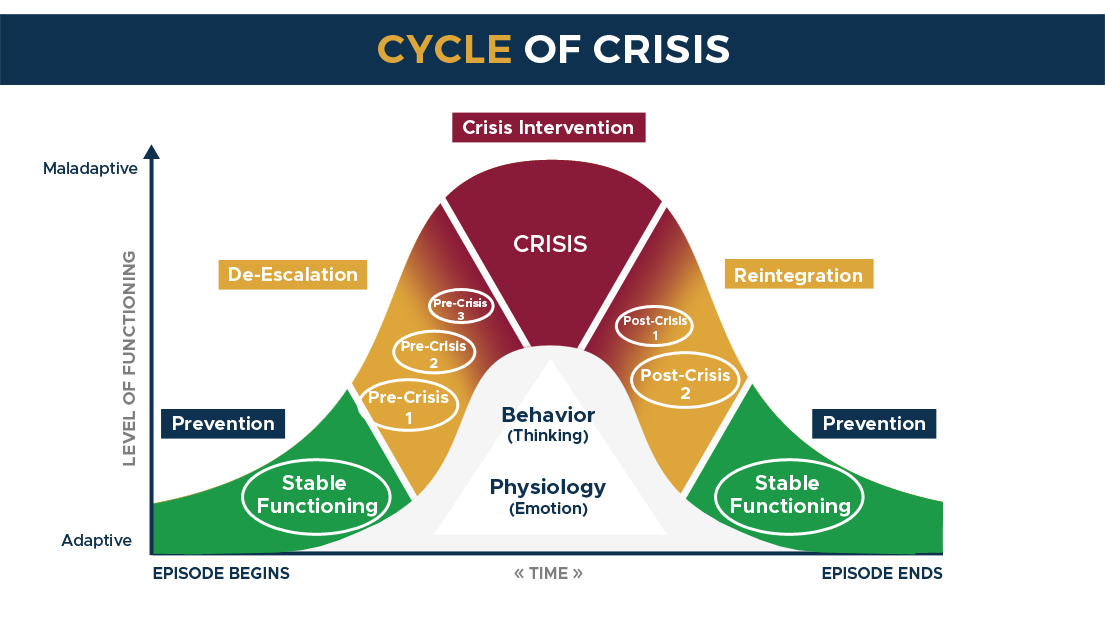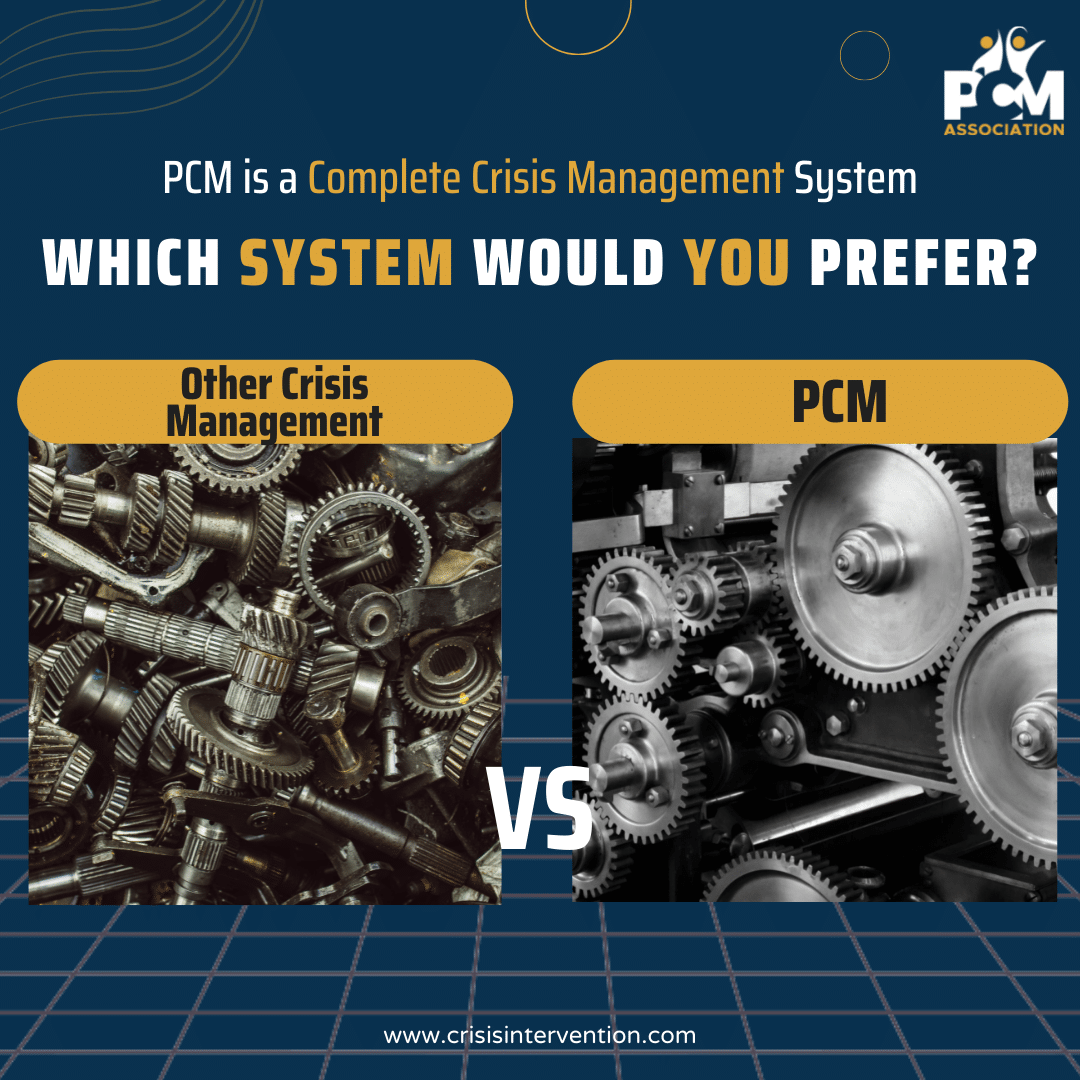There are many schools and treatment facilities that must deal with increasingly dangerous behavior like physical aggression and even self-injurious behavior. In an earnest attempt to address these mounting issues, they seek out help with crisis management, but end up receiving training from companies with a program that primarily focuses on techniques like de-escalation and restraint.

Partial Crisis Management systems cause dangerous behaviors to occur again, and again, AND AGAIN!
Now, while these are certainly both critical components to managing crises, they do not represent a complete crisis management system. In fact, de-escalation and restraint should actually comprise the smallest part of the system. As a result of the narrow focus on de-escalation and restraint, dangerous behaviors occur again, and again, AND AGAIN!
This leads to frustration, low morale, injury, litigation, staff and faculty turnover; in addition, it negatively impacts relationships between the professionals and the learners, and ultimately impedes the education or treatment of the individual as well as other individuals in the building.
Complete Crisis Management systems lead to a reduction in the frequency and severity of dangerous behaviors

Educators, staff, parents, and guardians desire a crisis management system that doesn’t just band-aid the situation, but actually leads to a reduction in the frequency and severity of dangerous behaviors and the associated issues. One that simultaneously serves to maintain relationships in a way that helps, but not hurts, the educational or treatment processes.
Every organization needs to have a Complete Crisis Management system AND have it fully adopted into its operations. But as you'll find out shortly, having the right system is only the first crucial step, embedding this system deep into the processes and culture of the organization is the essential second step.
A complete crisis management system, grounded in behavior science, is critical for reducing dangerous behavior. Behavior science is necessary because systems are made up of a number of processes, processes made up of procedures, and procedures are ultimately made up of behaviors. A complete crisis management system has to have procedures that address ALL the components of the Cycle of Crisis.
This means having procedures that effectively support the individual during Stable Functioning, during Pre-Crisis Behavior, and during actual Crisis and during Post-Crisis. However, most schools and organizations are not equipped with systems or behavioral science because they are focused too much on putting out "behavioral fires" by responding with de-escalation and crisis intervention.

Therefore, too little on prevention and seamless reintegration of the student back into the educational or treatment environment. This is like sending a young child to the doctor’s office for issues associated with being overweight, but failing to create an environment at home that provides regular opportunities for healthy eating and exercise while simultaneously educating them on the importance of eating well and working out. Oh, and then the doctor makes diet and exercise prescriptions that are not backed by rigorous research! Let's take a look at the cycle of crisis as the critical components as outlined by PCM.
The Cycle of Crisis identifies characteristics of an individual’s functioning before, during, and after a crisis as presented on the horizontal axis labeled “TIME.” It is this unique combination of an individual’s behavioral state, physiological state, thinking, and emotion (noted underneath the bell curve) that determines an individual's level of functioning. By understanding the individual’s functioning as represented by the vertical access, it is possible to determine the most appropriate way to interact and to assist the individual. In this graphic, you will also note:

- On the left side, an individual’s level of functioning moves from adaptive to maladaptive behavior which is characterized by the circles that include stable functioning, levels of pre-crisis, crisis, and levels of post-crisis.
- Each circle, different in size, represents the relative number of management responses available at particular levels of the Cycle of Crisis.
- Each section of the curve, identified as Prevention, De-escalation, Crisis Intervention, and Reintegration, represents the type of management response that should be provided to an individual based on their level of functioning.
In short, the cycle of crisis graphic represents the complete and precise set of evidence-based responses based on the needs of each individual that further separates PCM from every other crisis management system in the world. Having a crisis management that has a limited set of tools and begins with de-escalation is like a mechanic who offers their services but has a toolbox with only a wrench and screwdriver in it.

And to add insult to injury, they only work on cars when they are breaking down instead of providing services like oil changes and tune ups that regularly maintain them. It just doesn’t make sense!
Knowing what to do and when to do it is critical to successful crisis management, but it’s not the final step. It’s also about the process of embedding and maintaining an effective crisis management system within your school or facility. You can’t just send people to a crisis intervention course and expect they will be prepared to meet the needs of the students or clients just because they walk away with a card or certificate that says they’ve been trained.

A Complete Crisis Management System Grounded in Science
At PCMA, we offer a complete crisis management system grounded in Applied Behavior Analysis, or the science of human behavior for making a positive difference. As we’ve demonstrated, our system ensures people have the right tools for precisely preventing, de-escalating, intervening, and reintegrating students or clients back into their normal environment; moreover, our approach, intended to assist schools and facilities with becoming as safe as possible, uses 9 prescriptive and concrete steps to ensure that what instructors and practitioners are taught, effectively transfers back into educational or treatment environment. These steps include:

- ‘Planning’ which involves analyzing, informing, and designing a plan.
- Step 2 is ‘Educating’ a team of in-house experts.
- Step 3 involves ‘Evaluating and Certifying’ to ensure both competence and confidence.
- Step 4 includes ‘Organizing the Roll Out’ of the crisis management system to ensure effective implementation.
- Step 5 is critical and focuses on ‘Educating Practitioners’ to ensure staff are able to successfully prevent and intervene in crisis situations
6. Once practitioners are trained, Step 6 focuses on helping them effectively ‘Apply' and Optimize’ to ensure the procedures are being implemented contextually and with fidelity.
7. Step 7 is ‘Assuring’ which involves the use of data to monitor and support continued success.
8. In Step 8, ‘Advocating,’ satisfaction of the stakeholders is sought out and measured.
9. And finally, Step 9, ‘Advancing,’ ensures continued growth and refinement of competencies.
The Tale of 2 Schools
Consider the tale of two schools where practitioners were trained in crisis management. In school A, practitioners received the standard crisis training, but did not have a systematic approach for embedding the system as outlined above. If you were to enter that school, you may find elements of the system in action, but nothing close to what they were trained in. Even if the procedures they were trained in had some merit. As a result, you would notice that student behavior did not change. In addition, teacher and staff morale continued to be negatively impact.
In school B, practitioners were trained using a scientific methodology in PCM, a complete crisis management system rooted in applied behavior analysis. After, the instructor along with his or her team used the 9 steps to embed the system into the school. In that school setting, like the tens of thousands we’ve trained, you would certainly observe drastic decreases in behavior, and drastic increases in teacher and staff morale that had been previously negatively impacted by the issues related to crisis.
Listen, if your goal is to check a box off that says your people are trained in crisis management, there are many systems that will accommodate you. But if you want practitioners who are trained in a complete evidenced-based system, and you would like that system to be effectively implemented in your school or facility, then you need Professional Crisis Management. For more information, click the link below or email carter@pcma.com.


